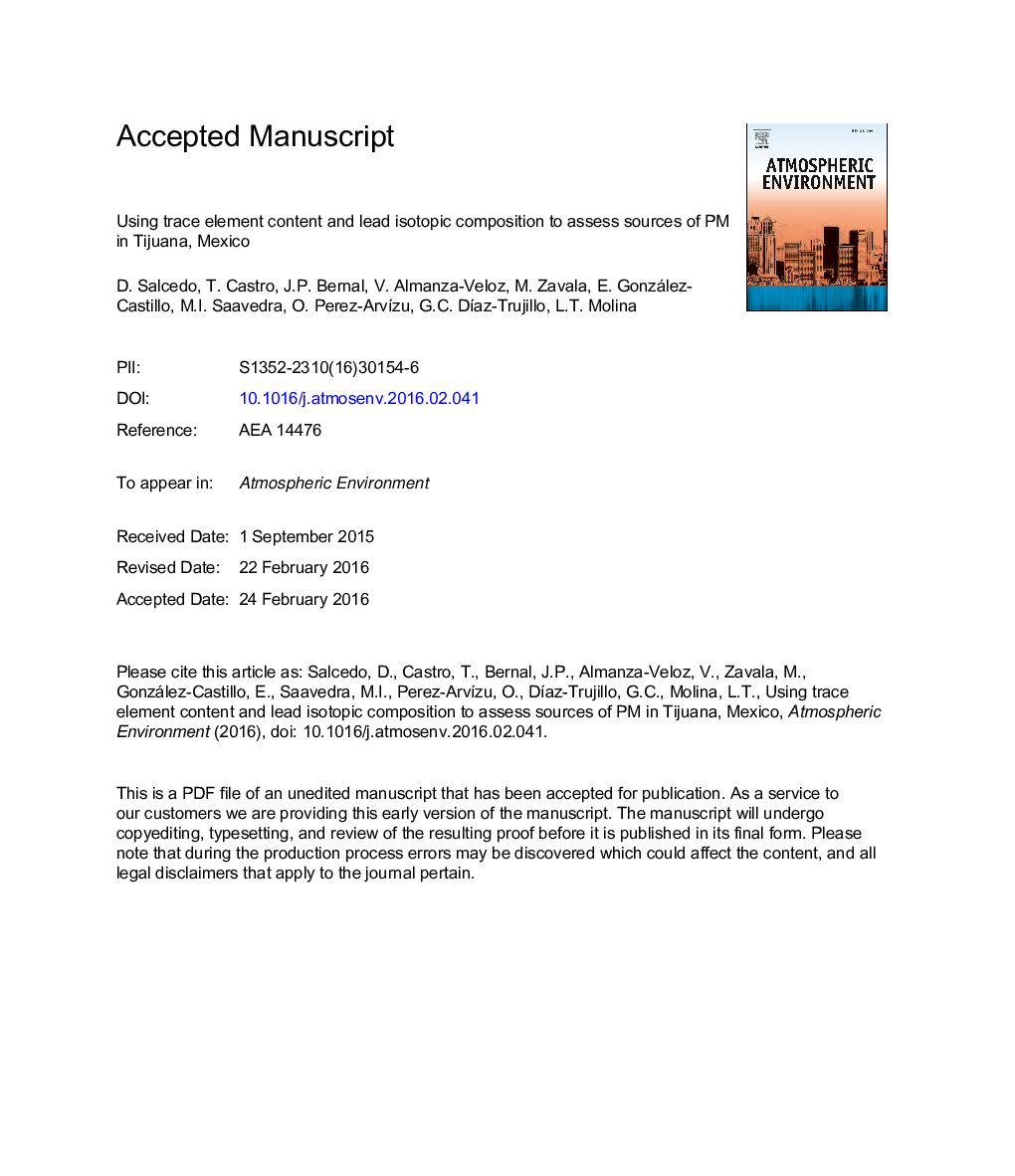| Article ID | Journal | Published Year | Pages | File Type |
|---|---|---|---|---|
| 6336373 | Atmospheric Environment | 2016 | 24 Pages |
Abstract
PM2.5 samples were collected at two urban sites (Parque Morelos (PQM) and CECyTE (CEC)) in Tijuana during the Cal-Mex campaign from May 24 to June 5, 2010. Concentration of trace elements (Mg, Al, Ti, V, Mn, Fe, Co, Ni, Zn, Cu, Ga, As, Se, Rb, Sr, Mo, Cd, Sn, Sb, Ba, La, Ce, and Pb), and Pb isotopic composition were determined in order to study the sources of PM impacting each site. Other chemical analysis (gravimetric, elemental and organic carbon (EC/OC), and polycyclic aromatic hydrocarbons (PAHs)), were also performed. Finally, back-trajectories were calculated to facilitate the interpretation of the chemical data. Trace elements results show that CEC is a receptor site affected by mixed regional sources: sea salt, mineral, urban, and industrial. On the other hand, PQM seems to be impacted mainly by local sources. In particular, Pb at CEC is of anthropogenic, as well as crustal origin. This conclusion is supported by the lead isotopic composition, whose values are consistent with a combination of lead extracted from US mines, and lead from bedrocks in the Mexican Sierras. Some of the time variability observed can be explained using the back-trajectories.
Keywords
Related Topics
Physical Sciences and Engineering
Earth and Planetary Sciences
Atmospheric Science
Authors
D. Salcedo, T. Castro, J.P. Bernal, V. Almanza-Veloz, M. Zavala, E. González-Castillo, M.I. Saavedra, O. Perez-ArvÃzu, G.C. DÃaz-Trujillo, L.T. Molina,
